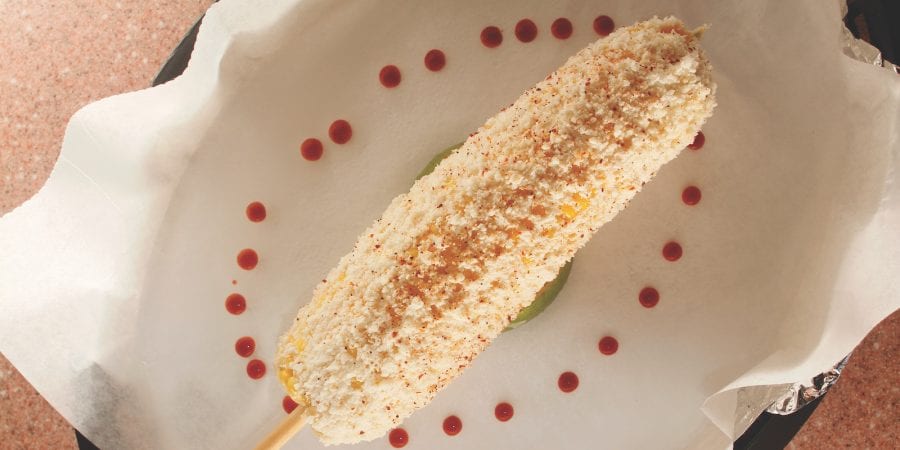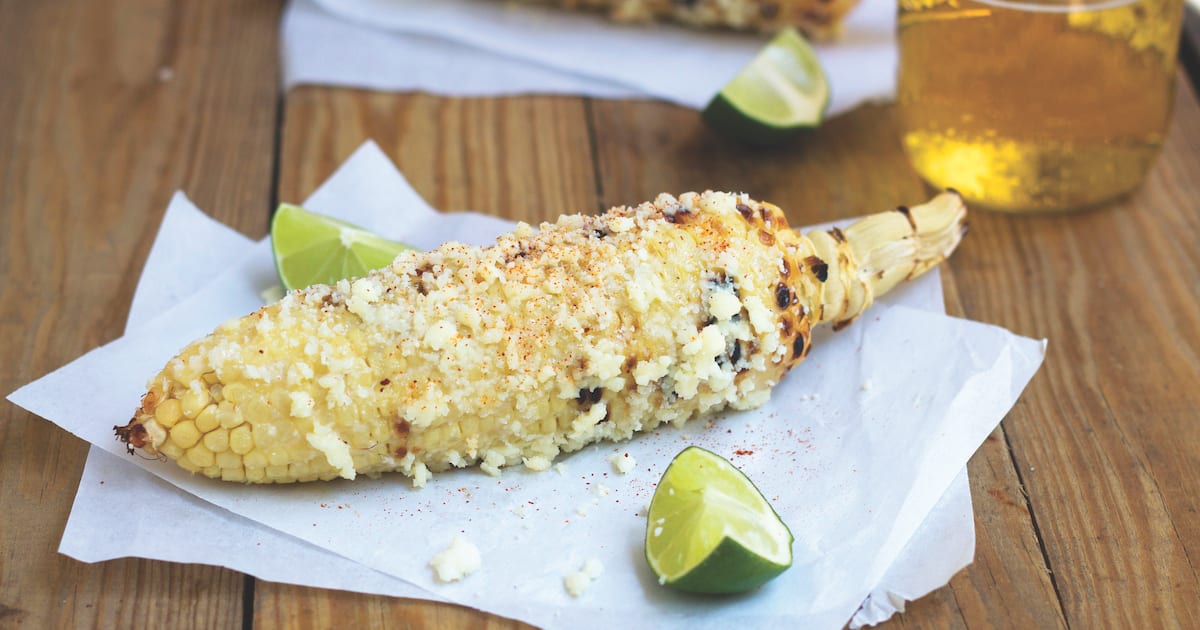Street Corn (elote)
[ē-lōtl]
n: also known as “Mexican Street Corn”; seasoned, cheesy corn on a stick.
The sweet and simple starch that we associate with summertime has a complex history. It is easy to imagine rippling fields of green stalks as an inherent part of the rural American landscape, but corn as we know it today has evolved substantially over the last few centuries. The word “corn” itself historically referred to the predominant grain crop of a region. For example, in England wheat was “corn”; in Scotland, oats; and in northern Germany, rye. What we think of as “corn” is really “maize,” which comes from the Spanish “maiz,” which comes from the Taino word “mahiz.” Taino was the native language of Hispaniola, the island where the Spanish conquistadors arrived in their quest to find India. Accordingly, the English settlers in America referred to maize as “Indian corn,” that is, the crop grown predominantly by the “Indians.” Thus, maize was an essential element of survival for the indigenous people of the Americas due to its easy cultivation and versatile culinary uses, namely corn tortillas. Presented here is the addictive corn dish “elote,” also known as “street corn.” Some of our favorite aspects of Southern cuisine are the vibrant and tangy influences that spill over the border from Mexico, and elote is exemplary of such. While versions abound, a typical elote dish consists of fresh corn boiled in the husk and then grilled to achieve that delicious charred flavor. Still hot, the corn is rolled in mayonnaise and Cotija cheese and then sprinkled with spices like cayenne pepper. Topped with fresh squeezed lime juice, the elote is ready to be devoured. Get thee to the street and eat, eat, eat.

Las Tortugas’ Elote
Mas Tacos Elote
share
trending content
-
Summer’s Top Culinary Trends
-
Top 15 Restaurants Near the Atlanta Airport
by TLP's Partners -
7 Essential New Southern Cookbooks to Fill Your Shelves
by Erin Byers Murray -
The Harvest: Apple Recipe Round-Up
by Brianna Connelly -
Recipes From Our 2025 Winter Issue
More From At the Table
-
The Harvest: Apple Recipe Round-Up
-
Well Preserved: A Chef’s Home Guide to Preservation
-
10 Jewish-Inspired Recipes for Rosh Hashanah
-
6 Brunch-Themed Tailgate Recipes
-
Cooking for Comfort









